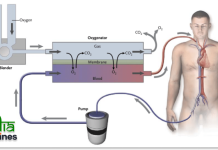
Asthma is a chronic respiratory condition that affects millions of people worldwide. It is characterized by inflammation and narrowing of the airways, leading to breathing difficulties. This blog will explore how asthma is diagnosed and the various treatment options available to manage this condition effectively.
Indian Asthma Care Society was established on 21st May 1985. Dr US Mathur and Dr Virendra Singh were founder president and secretary respectively. Since inception IACS has actively involved in education of asthma patients and anti-tobacco activities.
What is Asthma?
Asthma is a long-term condition that causes your airways to become inflamed and narrow, making it difficult to breathe. Common symptoms include wheezing, coughing, chest tightness, and shortness of breath. These symptoms can vary in severity and may be triggered by allergens, exercise, cold air, or respiratory infections.
Asthma can affect people of all ages, but it often starts in childhood. Though there is no cure for asthma, with the right diagnosis and treatment plan, it can be managed effectively, allowing individuals to lead a normal, active life.
Understanding the Causes and Triggers of Asthma
Asthma is influenced by a combination of genetic and environmental factors. While the exact cause is unknown, several risk factors are associated with the development of asthma:
- Genetics: A family history of asthma or allergies increases the likelihood of developing asthma.
- Environmental Factors: Exposure to allergens such as pollen, dust mites, pet dander, and mold can trigger asthma symptoms. Air pollution, cigarette smoke, and occupational hazards also contribute to the development and worsening of asthma.
- Respiratory Infections: Infections, especially during early childhood, can cause inflammation in the lungs and may increase the risk of asthma.
- Lifestyle Factors: Obesity, stress, and a sedentary lifestyle can exacerbate asthma symptoms.
How is Asthma Diagnosed?
Diagnosing asthma involves a combination of medical history, physical examination, and lung function tests. Early and accurate diagnosis is crucial for effective management. Here’s what the diagnostic process typically involves:
- Medical History and Symptom Analysis:
- Your doctor will ask about your symptoms, frequency, and severity. They may also inquire about any family history of asthma or allergies and identify any triggers that may be contributing to your symptoms.
- Physical Examination:
- A physical examination focuses on your respiratory system. Your doctor will listen to your lungs using a stethoscope to detect any wheezing or other abnormal sounds.
- Lung Function Tests:
- Spirometry: This is the most common test used to diagnose asthma. It measures the amount of air you can exhale after taking a deep breath and how quickly you can do so. This helps assess the narrowing of your bronchial tubes.
- Peak Flow Meter: This device measures the speed at which you can blow air out of your lungs. A lower-than-normal reading may indicate that your lungs aren’t working as well as they should, a sign of asthma.
- Methacholine Challenge: If your spirometry test results are normal but your symptoms suggest asthma, a methacholine challenge may be conducted. Methacholine is a substance that, when inhaled, causes mild constriction of the airways. If you react to it, you likely have asthma.
- FeNO Test: This test measures the level of nitric oxide in your breath, which is higher in people with asthma.
- Allergy Testing:
- Allergies can play a significant role in triggering asthma. Skin or blood tests can identify specific allergens that may be causing or worsening your symptoms.
- Additional Tests:
- If necessary, other tests such as chest X-rays or CT scans may be conducted to rule out other conditions like chronic obstructive pulmonary disease (COPD) or heart disease.
Asthma Treatment Options
Once diagnosed, the focus shifts to managing asthma through a combination of medications, lifestyle changes, and ongoing monitoring. The goal is to control symptoms, reduce flare-ups, and maintain optimal lung function.
- Medications:
- Quick-Relief Inhalers (Rescue Inhalers): These are used to quickly relieve asthma symptoms during an attack. Short-acting beta-agonists (SABAs) like albuterol are commonly prescribed for immediate relief.
- Long-Term Control Medications: These are taken daily to prevent symptoms and reduce inflammation. They include inhaled corticosteroids, long-acting beta-agonists (LABAs), and leukotriene modifiers.
- Combination Inhalers: These contain both a corticosteroid and a long-acting beta-agonist, offering both immediate relief and long-term control.
- Biologics: For severe asthma that doesn’t respond well to standard treatments, biologic medications like omalizumab can be effective. These are administered via injection and target specific pathways in the immune system.
- Lifestyle Changes:
- Avoid Triggers: Identifying and avoiding triggers like allergens, smoke, and pollution is crucial in managing asthma.
- Healthy Diet: A balanced diet rich in fruits, vegetables, and omega-3 fatty acids can help reduce inflammation and improve overall lung function.
- Regular Exercise: Exercise strengthens the respiratory system, but it’s important to choose activities that don’t trigger asthma symptoms. Consult with your doctor to develop an exercise plan that suits your condition.
- Stress Management: Stress can exacerbate asthma symptoms. Practices like meditation, yoga, and deep breathing exercises can help manage stress levels.
- Asthma Action Plan:
- An asthma action plan is a personalized guide created with your healthcare provider. It outlines what medications to take daily, how to handle worsening symptoms, and when to seek emergency care. This plan helps you stay in control of your asthma and reduces the risk of severe attacks.
- Regular Monitoring:
- Regular check-ups with your healthcare provider are essential for monitoring your condition and making any necessary adjustments to your treatment plan. Using a peak flow meter at home can help you track your lung function and detect early signs of an impending asthma attack.
Managing Asthma in Children
Asthma is one of the most common chronic conditions in children. Managing asthma in children requires special attention, as their symptoms and triggers can differ from those in adults. It’s important to work closely with a pediatrician to develop a comprehensive treatment plan.
- Medication Management: Ensure your child uses their inhaler correctly and understands when to use quick-relief and long-term control medications.
- Education: Teach your child about their condition, including how to avoid triggers and what to do in case of an attack.
- School Coordination: Inform teachers and school staff about your child’s asthma and provide them with a copy of the asthma action plan. Ensure the school has quick access to medications if needed.
Conclusion
Asthma, though a chronic condition, can be effectively managed with proper diagnosis and treatment. Understanding your triggers, adhering to your treatment plan, and making necessary lifestyle changes are key to living a healthy life with asthma. Regular communication with your healthcare provider ensures that your asthma is well-controlled, reducing the likelihood of severe attacks and complications. By staying informed and proactive, you can manage asthma and enjoy a full, active life.




































